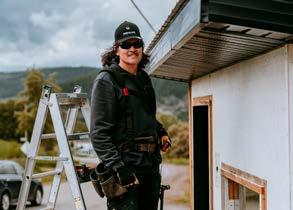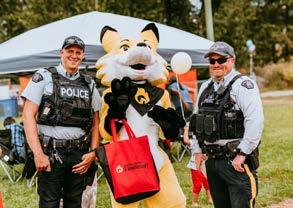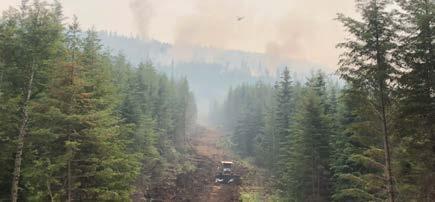
9 minute read
Economic Development Highlights
Biomass Williams Lake First Nation is trying to utilize as much fiber from logging activities as possible. This also greatly reduces carbon emissions that occur from burning slash piles. We have been involved with grinding material with Tsi Del Del and also developing a business for chipping. These are two methods for processing residual harvest material for suitable fiber for Pinnacle Pellet and Atlantic Power. In the spring Borland Creek Logging bought an excavator and Williams Lake First Nation bought a chipper to work together to decrease logging debris going up in smoke. We were able to finish chipping slash piles from the 2017 fire on IR 1 as well as Logging debris from Bond Lake, Racetrack, Community Forest, and Fox Mountain Fuel Management projects.
Forest Enhancement Society Of BC (FESBC) Williams Lake First Nation has lead multiple FESBC projects. FESBC main goals are to reduce the risk of fire to communities, improve forest health and reduce the carbon footprint. FESBC has been involved with the biomass operations by helping move this low valued product off harvested blocks. FESBC has also supported the purchase and site preparation for 426690 seedlings to be planted on the land above Coyote Rock Golf Course. The planting of these seedlings will occur spring 2022. FESBC also supported the purchase and planting of 20,000 seedlings in 2021. WLFN and FESBC identified young stands that required fertilization to improve tradition plant growth and health for sustenance. WLFN was featured in a Documentary “BC Forestry Workers Are Climate Change Heroes” which was filmed by FESBC. Other projects include fuel management work on the Racetrack block and aiding with the extra costs associated with the harvest in IDF revitalization projects.
Advertisement
Fire Fighting Task Force This year WLFN lead a task force to help fight wildfires with BC Wildfire Service. This was completed with staff from WLFN, Borland Creek Logging, Jatco, and Rob Menzies Contracting. This proved be a success as we were called out immediately to the McKinley Lake fire and latter on to the Succour Lake Fire. The task force was utilized for approximately four weeks this summer.
California Big Horn Sheep WLFN is also very concerned for the well being of our wildlife. Two species in particular have had declining populations for over a decade. WLFN is working with the Fraser River Bighorn Sheep working group to help improve conditions to allow these sheep herds to recover both through herd health and habitat improvements.
Biomass Fire Fighting Task Force
Forest Enhancement Society of BC California Big Horn Sheep

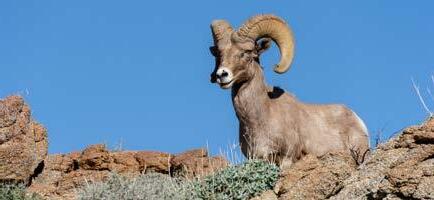
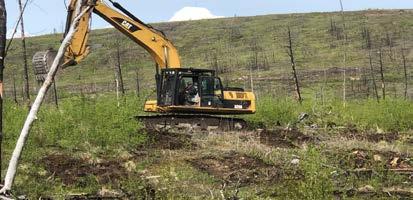
WILLIAMS LAKE FIRESMART PROJECT
Project Summary: WLFN and City of Williams Lake are to collaborate on a regional project to increase capacity to hire and train staff in fire mitigation strategies for areas identified in the Williams Lake and Area Community Wildfire Protection Plan (CWPP). $300,000 provided by provincial government in 2021, administered by UBCM through Community Resiliency Investment Program funding stream. FireSmart BC is a program overseen in part by UBCM and FNESS, the objective of which is to disseminate safe practices to protect residences, community assets and critical infrastructure from wildfire.
Participants: » WLFN Natural Resources Dept. leading assessment, mitigation, fuel treatment efforts. » Operations assisted by Borland Creek Logging (fuel treatment), Sugar Cane Development Corp. (archaeology). » Supported by Municipal Services of City of Williams
Lake, BC Wildfire Service, School District 27
Project Objectives: 1. Hire a FireSmart Coordinator and temporary employee for support 2. Provide FireSmart Training for new employees 3. Create FireSmart Projects for Residential Properties,
Community Assets and Critical Infrastructure, including assessment and mitigation 4. Create two Fuel Treatment demonstration projects
Location and Time: Assessments of residences within Cariboo Fire District, community assets and critical infrastructure within City of Williams Lake and Sugar Cane Community on I.R. 1, to occur beginning in October 2021 through 2022.
Fuel treatment (prescribed burning) to occur in early April 2022 on two grassland sites on I.R. 1, with one located near Pioneer Log Homes located West of Sugar Cane, and the other near the Baseball Diamond in the southern part of Sugar Cane.
Goals: Train FireSmart Coordinator as Local FireSmart Representative, enable them to train others in FireSmart activities including WLFN O&M staff and subsidiary entities (BCL), City and School District 27 staff. Provide training to Neighborhood Champions, who are neighborhood contacts and leaders of FireSmart efforts in residential areas. Coordinator is now trained LFR, can train others in FireSmart practices.
Create recognized FireSmart Neighborhoods, groups of residences assessed, treatment performed and verified by FireSmart BC. None recognized to date.
Educate public about FireSmart practices through social media, engagement at public events. Radio advertisement, Facebook and Boo Maga articles, two public events attended.
FireSmart Home Assessment performed for 109 residences in Williams Lake area. Assessments are score-based, a higher score meaning more risk of fire damage. 4 home assessments performed to date.
WLFN staff and Borland Creek Logging will perform recommended fuel mitigation for residential properties of 10 seniors and Elders after a FireSmart assessment is performed. Mitigation includes hand tool removal of vegetation, debris and other fuel hazards. Work involving large tree felling, construction, rooftops or any work requiring specialized contractors will be referred to local contractors and not performed by WLFN or BCL. No mitigation performed, work will occur in spring when snow melts.
Assess Community Assets on WLFN territory and other WLFN-owned and operated buildings, including Elizabeth Grouse Gymnasium and the WLFN office on Quigli Drive. Make recommendations to WLFN O&M staff for safe FireSmart practices. 12 assessments performed.
Critical Infrastructure Assessment to be performed for structures including water treatment, pumping and storage facilities, and schools. Archaeological assessment performed prior to mitigation treatment for water treatment and storage facilities, 6 sites for the City and 3 for Sugar Cane. Recommendations made to WL Municipal Services for improving FireSmart score, planning for future assessments and treatments. WLFN and BCL perform fuel mitigation, excluding the previously mentioned tasks. Critical infrastructure assessed, archaeological assessment and mitigation to be performed in spring after snow melt.
Burn plan created by contractors, implemented by WLFN and BCL, and assisted by BC Wildfire Service, Sugar Cane Fire Department and 150 Mile House Fire Department. Project advertised through media and described on posted signage to educate public regarding prescribed burning. Burn plan created, organization of operations, equipment acquisition and training of BCL employees ongoing.
Outcomes: Education of WLFN, City of Williams Lake and School District 27 staff, and the general public regarding FireSmart practices, adoption of safer habits by city employees and residents.
WLFN and City of Williams Lake increase wildfire resiliency, employees gain experience and training for improved future employment. Collaboration between Williams Lake First Nation, City of Williams Lake, local Fire Departments and residents to improve wildfire preparedness.
Re-integration of burning on First Nations Lands to promote healthy ecosystems and wildfire resilient forests surrounding urban/rural environment, demonstration of such practices performed on WLFN territory.
For more information, please contact: Willem Faasse, WLFN FireSmart Coordinator (778) 417-0192 willem.faasse@wlfn.ca
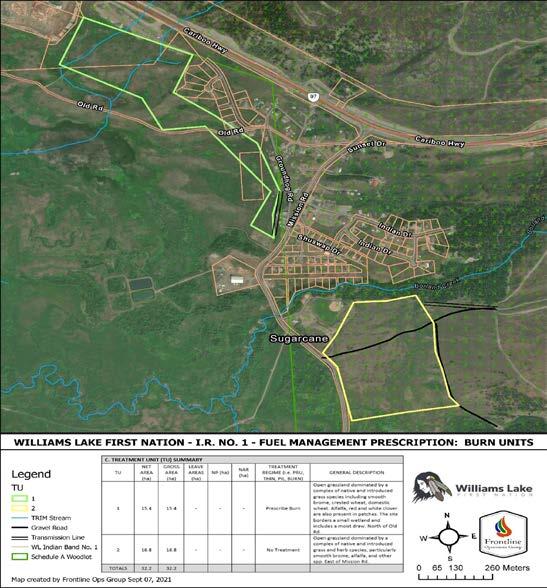

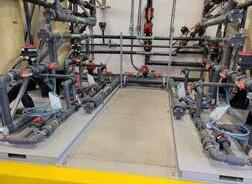
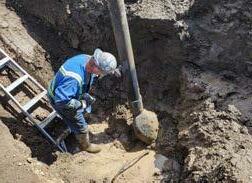
WATER PLANT
In 2013, a new water treatment plant was implemented to serve the entirety of Williams Lake First Nation. This Level 2 treatment facility presently processes between 150-170 cubic meters per day, supplying ample clean drinking water to no fewer than 133 homes and seven businesses. The plant presently has the capacity to serve at least 350 total connections. The facility serves all of Williams Lake First Nation, except for a handful of outlying homes that have their own wells.
WLFN works in partnership with the First Nations Health Authority to ensure that our drinking water is treated and monitored to the highest standard. The FNHA Drinking Water Safety Program engages Environmental Health Officers to review and interpret bacteriological, chemical, physical, and radiological drinking water quality results, in accordance with the Guidelines for Canadian Drinking Water Quality. Chief Water Operator Tommy Wycotte also performs regular in-community sampling, further solidifying confidence in the quality of our drinking water.
With a recent influx of new housing developments throughout Williams Lake First Nation, the facility is constantly upgrading to ensure the treatment plant keeps up with the demands of the community. Recently, such upgrades have included a new, second water reservoir, a booster station, and a lift station for wastewater.
Chief Water Operator Tommy Wycotte takes great honour in running the facility that provides clean drinking water to the people of Williams Lake First Nation. He has led operations of the water plant for the past five and a half years. It is truly a labour of love for Tommy; he maintains the plant, performs and oversees upgrades, administers water tests, and can even be seen mowing the lawn of the plant from time to time.
In Tommy’s words, “…supplying treated water to the people in the community now and into the future is of the utmost importance.”
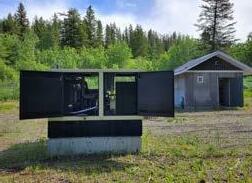

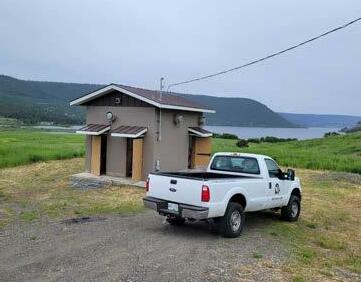
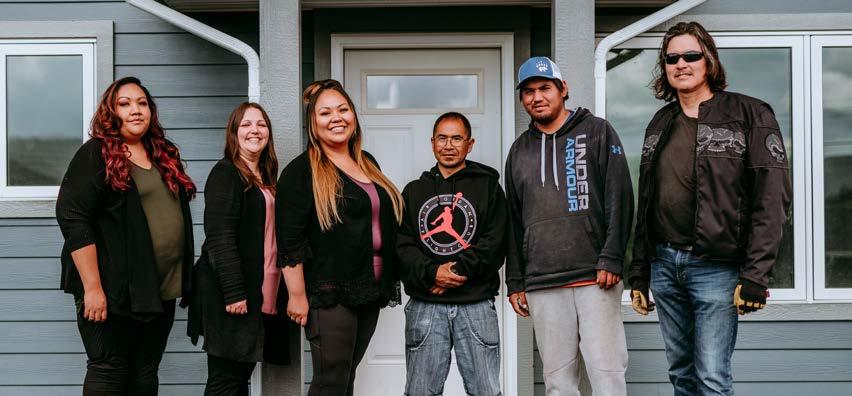
HOUSING AND O&M HIGHLIGHTS
The Housing and Operations & Maintenance highlights were:
» 1 ISC approved renovations » 5 renovations in progress » 39 Rental Units » 14 New Rental units » 25 existing rental units » 4 new rental units by Fall of 2022
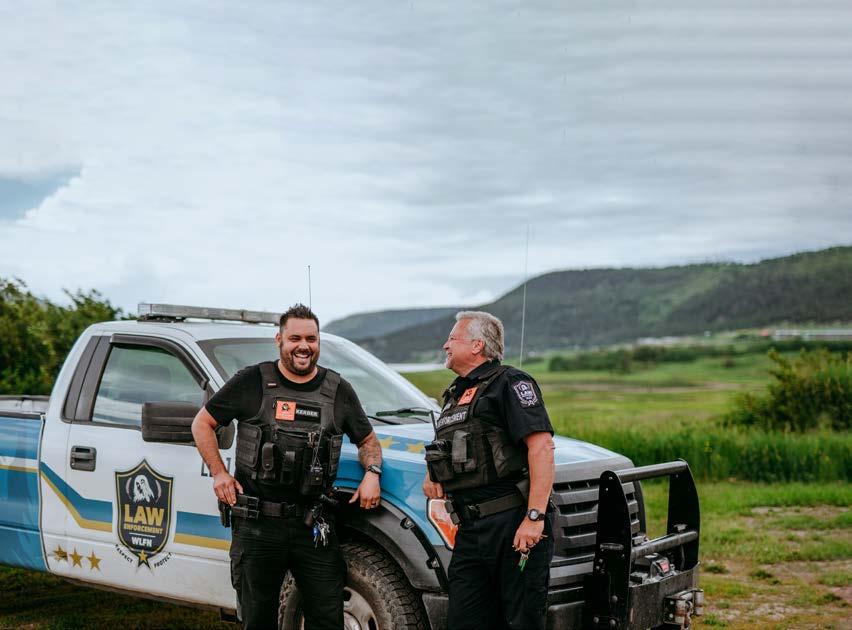
» The rental units currently house 87 members » 4 members completed home builds » 2 fully furnished Temporary Emergency Housing » In 2021/2022 we housed 5 families in our emergency units » 3 New Home construction grants issues to members » Assisted the finance department with the Arrears Policy » 426 Service requests placed at the O&M department » As of March 2021, there were 23 outstanding service requests on file
Samantha Dick has been the WLFN Housing Advisor since stepping into the position in March of 2021. She is proud to be in a role where she can oversee the building and renovation of homes, enabling more members to return to community and move into a beautiful home. “Our goal was to give members home transformations they can be proud of, and I feel we have accomplished this with our current renovations. I look forward to working with the community members and working closely with O&M to bridge gaps between our departments.”
LAW ENFORCEMENT HIGHLIGHTS
ACCOMPLISHMENTS
» 150 Mile fire house, re-established communication » Working towards a dispatch for LEO’s » Proper equipment on our belts » Rank and structure for the Law Enforcement Department » Shift restructure for more coverage per week » Trivia with a LEO on Facebook. » Re-establish relationship with RCMP
STATISTICS
» 37 Incident reports that have been completed between January 2022 – May 16, 2022 » Responded to over 500 calls or texts since
December 6, 2021 – May 16, 2022 » Have responded to over 20 mental health and child welfare calls with the health and wellness team » Weekly meeting with all departments » Weekly meeting with external Law Enforcement » Weekly patrols of all WLFN lands » Weekly checks of all Dam sites
